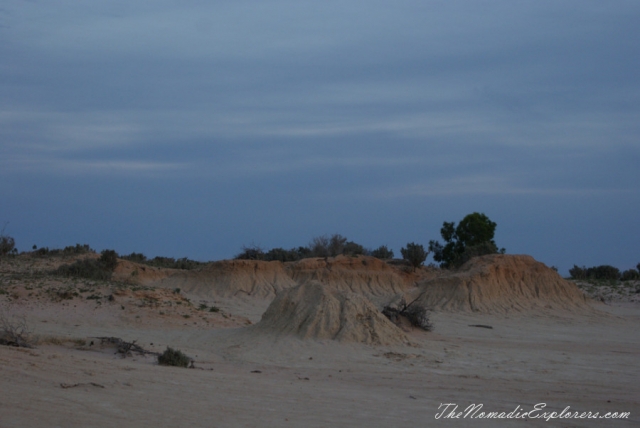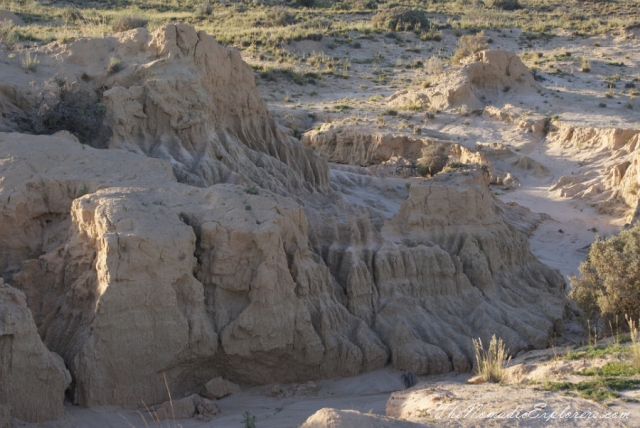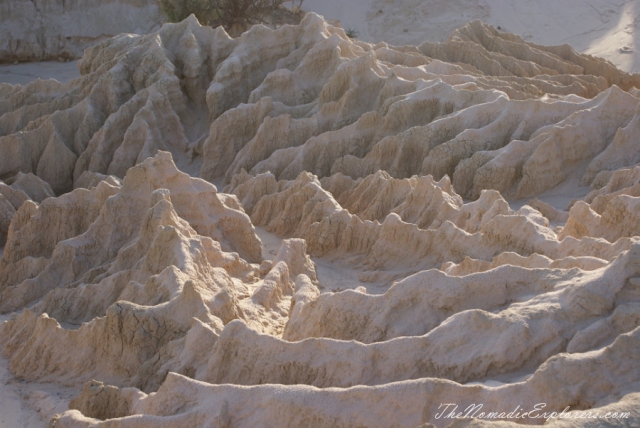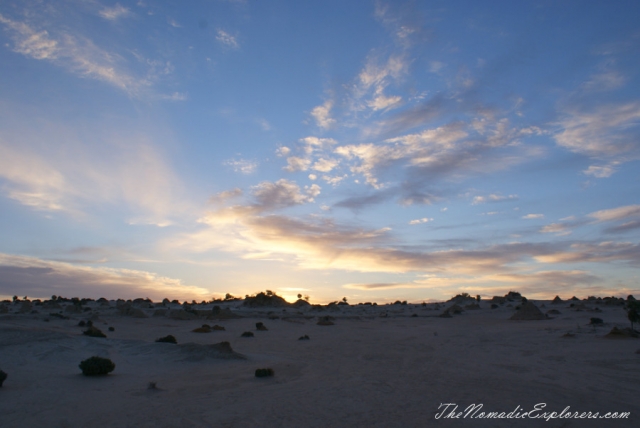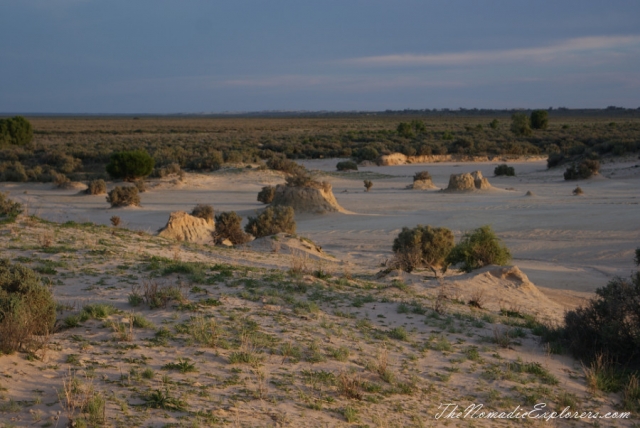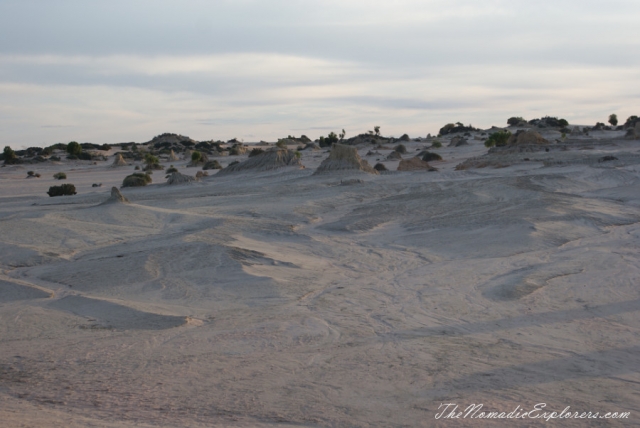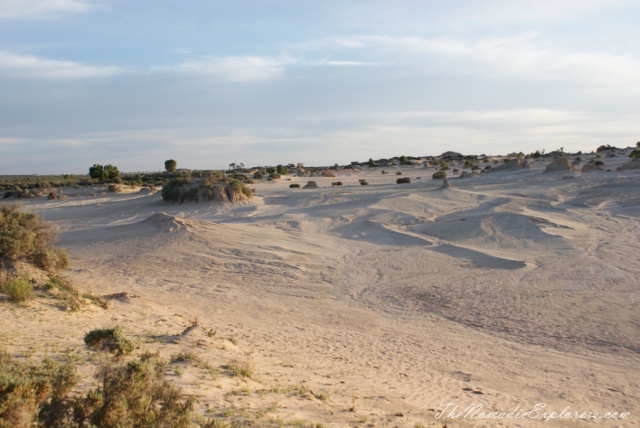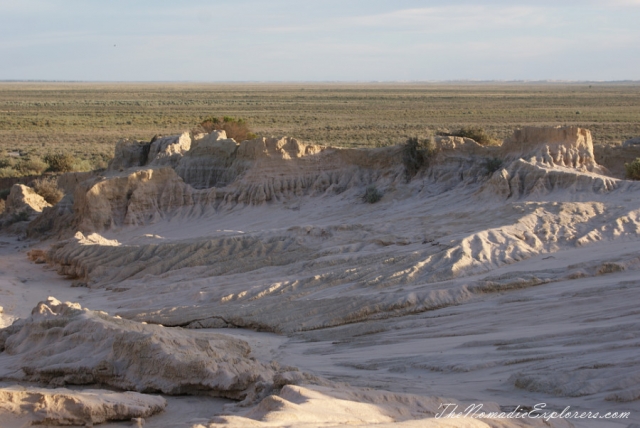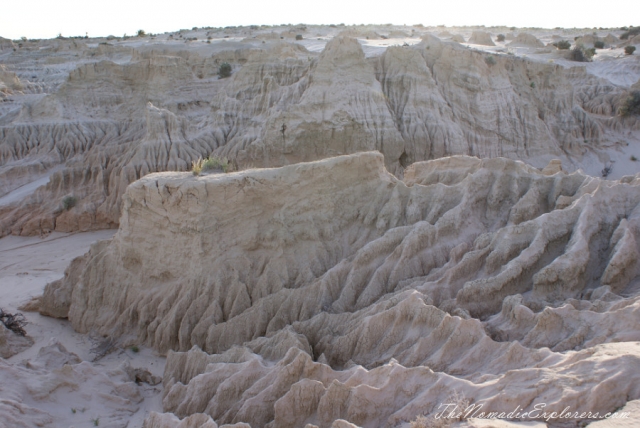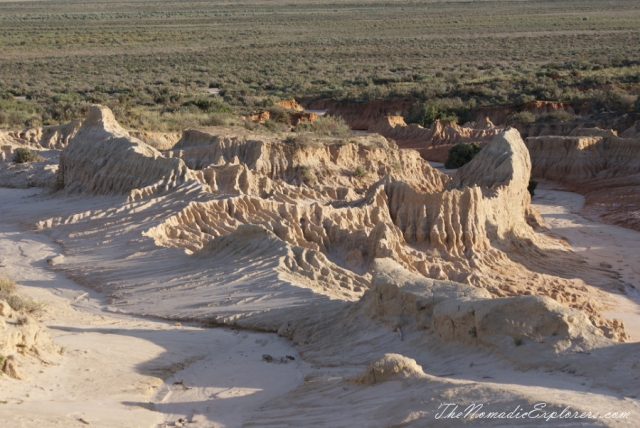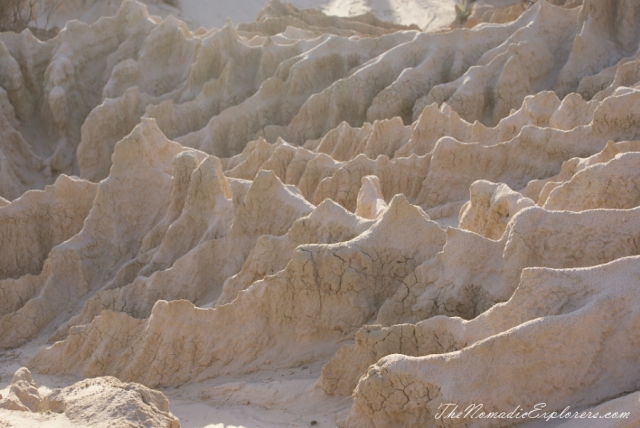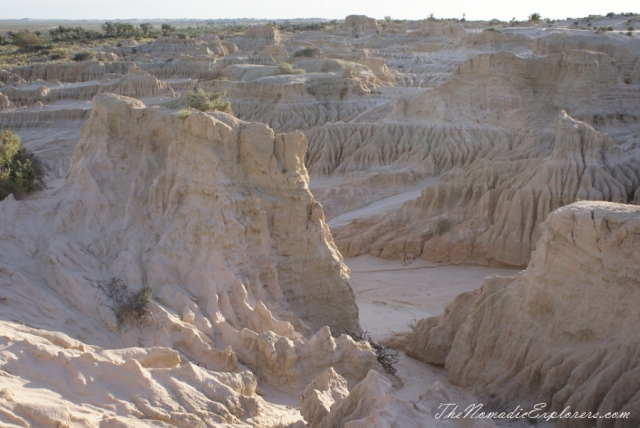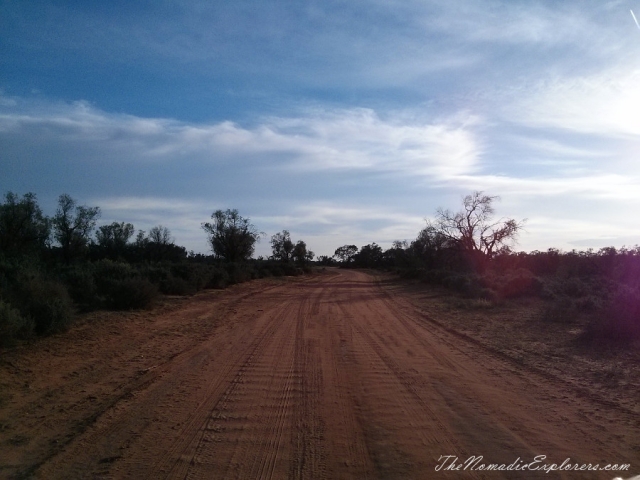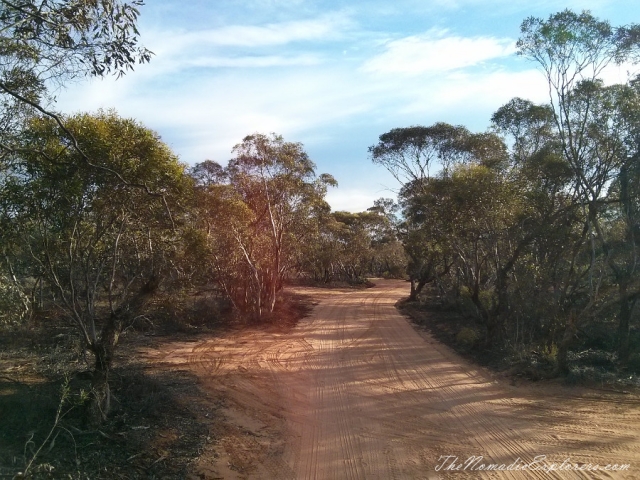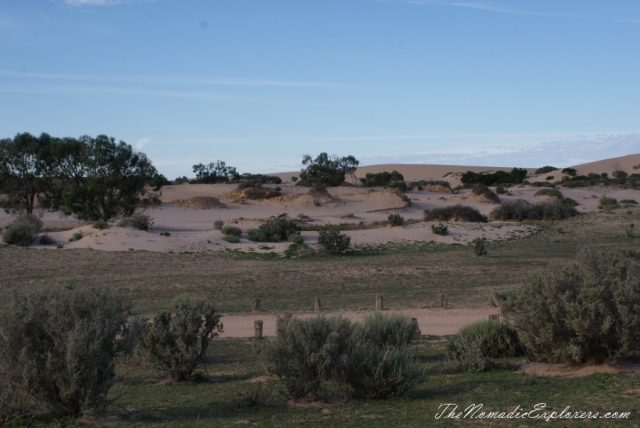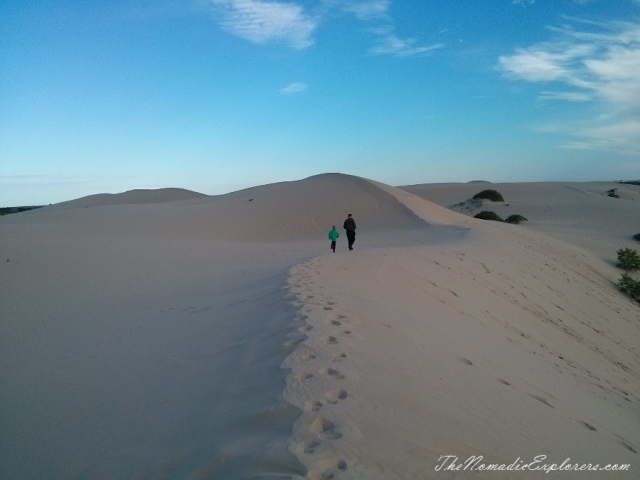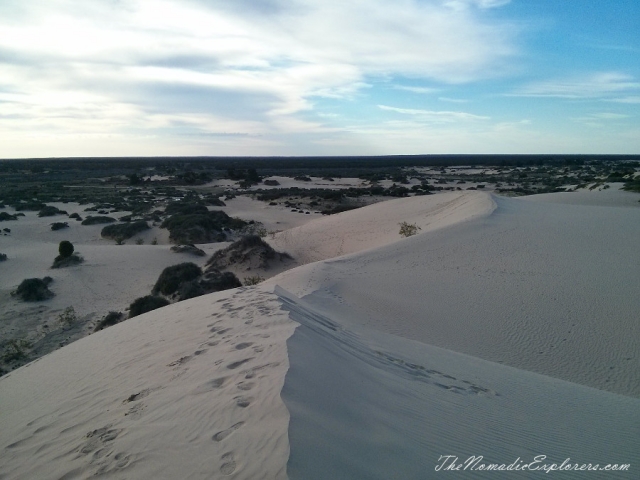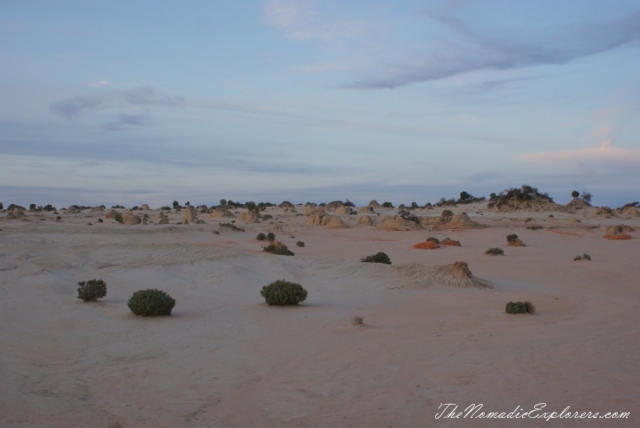Mungo National Park is located 110 km north-east of Mildura in south-western New South Wales. The national park covers an ancient dry lakebed. This lakebed preserves the longest continual record of aboriginal life in Australia, dating from approximately 40,000 years ago to the present day.
We went to Mungo National Park on our way back home from Flinders Ranges and spent a very enjoyable day there. Highly recommend it to anyone keen for a bit of history and outback touring.
The region is a vast riverine plain made up of the flood-plains and deltas of the Murray, Murrumbidgee and Lachlan Rivers. The area is nearly flat so waterways have little abrasive power and streams tend to be sluggish, meandering and frequently moving their beds. During millions of years, repeated periods of erosion and sedimentation have formed and re-formed rivers and streams. About 400,000 years ago, Willandra Creek, then a northern channel of the Lachlan River, was cut off by wind-blown sand moving from the south-west and Willandra Lakes were formed. Lake Mungo was one of these lakes filled by rainfall and river inflow. Climate change during this period, often associated with ice ages, bought long periods of cold, dry and windy weather leading to Lake Mungo drying up for many years before rain returned.
After the lake dried up, winds swept storms of sand up from the lake floor, dumping it on the shoreline and creating the famous Mungo lunette. This is the site of the spectacular Great Walls of China, which have been carved from layers of the lunette. As the lunette erodes it reveals remains and fossils. The ancient dunes at Mungo are known as the "Walls of China". As the sands shift, ancient and extremely well preserved campfires, cooking hearths and burials as well as the remains of long extinct animals have been uncovered. The fragile formations of sand and clay have been shaped by wind and water and are spectacular when viewed in their entirety from a distance.
Remains of the earliest known humans to inhabit the Australian continent have been found in Mungo. These remains known as Mungo Lady and Mungo Man. When these remains turned up some 40 years ago they amazed the scientific community. They have now been dated to 42,000 years old - the oldest human remains in Australia and some of the oldest modern humans in the world outside Africa. The abundance of the lake made Mungo an ideal location for Aboriginal settlement. Tribes camped and fished along the shores, hunted for food and quarried stone from rocky outcrops on the lake floor.
We met a sunrise near Walls of China, then drove to another viewing area near the Red Top Tank - the best viewing point of the lunettes in my opinion.
From here we were able to view the area at close range and it was amazing to see the natural beauty of the area, and to see just how remote this area is.
After a while we went to a 70-kilometre self-drive round trip around the Lake.
Malee shrubs:
On our way we made a side track to the dune near Vigars Well.
This used to be a well for watering coaches and drays but is now at risk of being overwhelmed by the sand dune advancing from the Walls of China. We had a great adventure out there climbing the huge dunes!
After a few more kilometres, we were back at the visitor centre. It took us 4 hours to do the lap. Although the Visitor Centre is a small building, it has a lot of information about the park and the aboriginal culture. There were also shelters for picnics and an undercover bbq area. Just a short walk away was the shearing shed which had been preserved as well as an accommodation block.
We spent an hour exploring the centre and could spend more, but it was time to go back home to Melbourne.
Mungo National Park is a highly recommended place to visit to anyone keen for a bit of history and outback touring.
Extremely enjoyable day!
